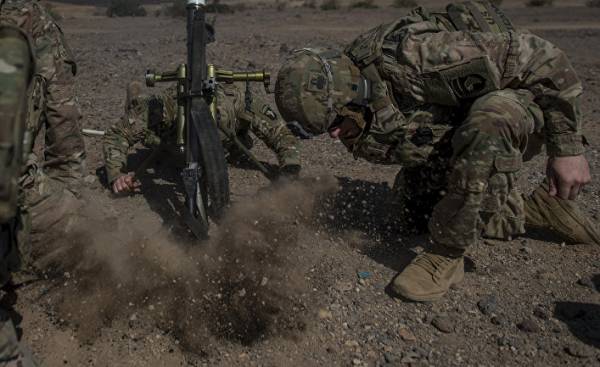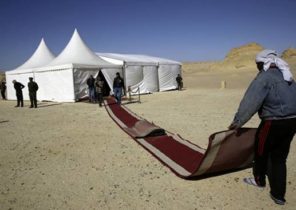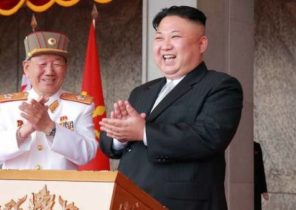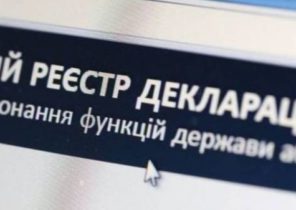
The spread of Russian and Chinese weapons around the world greatly increases the likelihood that the US army will face in the battle with tanks, drones, electronic warfare systems, precision-guided munitions, armored vehicles and artillery made almost equal force rivals.
Although the probability of launching a ground war between the great powers with the use of mechanized forces and means is very low, the US army must be prepared for any developments, including, the fighting on land. The army command explained that the current and future conditions of war, they increasingly have to deal with fighting in urban environments, and with weapons of Russian and Chinese production.
Russian-made tanks T-72 and T-90, Chinese drones, fighter jets and missiles today are in service with armies around the world and can be involved in the conflict with the United States. In particular, Pakistan is armed with Chinese production tanks “Type 85-IIAP”, and Iran has Russian T-72 tanks. Chinese tanks have even small countries such as Bangladesh. A Russian-made tanks have a much larger number of States, such as Cuba, India and Libya. It is not surprising that North Korea has both Chinese and Russian tanks.
The army command also explained that if the US army will be in Syria, they will face military equipment of the Russian production. This scenario is unlikely, but the prospect of this kind creates a real problem for military analysts and trainers.
“If the army joins in the fighting on the ground in the middle East, we will be faced with military equipment from Russia, Iran, and in some cases from China,” — said a senior representative of the army.
Changes in combat training of land forces
Army live-fire exercises are conducted at the battalion level under the various scenarios in which mechanized units are often faced with a conditional and “almost equal” opponent, applying new technology, unmanned aerial vehicles, tanks, artillery, missiles and armored vehicles.
Army improve military training and scenario exercises with live firing to increase the opportunities for confrontation between large forces of the enemy. In the process they tend to use accumulated over a half decade of combat experience with the use of infantry on foot and in a counterinsurgency fight.
Recent ground war in Iraq and Afghanistan helped to create experienced and battle-tested troops, able to hunt down, attack and destroy the small enemy groups, which often merge with the local population, move in a small car with an open body and hide on different types of terrain with the purpose of the device ambushes.
“Ground forces have a huge experience. It is deep, but lacks scale. We have learned to conduct counterinsurgency combat operations with the aim of ensuring security of the vast territory. Now we have to focus on preparing for “motorized maneuvers” over long distances, said the Deputy head of personnel management, training and development of the doctrine of Ricky Smith (Rickey Smith).
Although high army officials have repeatedly stressed that the counterinsurgency fight is still important as the training plans for action on a variety of conflict scenarios, there is a noticeable and very distinct shift in priorities. In the army now increasingly talking about the need to prepare to fight and win the war with a large and modern armies such as Russian and Chinese.
Of course, in the army, these countries are not considered enemies. There was not being prepared for military action specifically against those countries, and no plans to war with them. But recognizing the fact that today’s threats are very serious and fickle, and that can lead to increased tension and competition with the aforementioned great powers, ground troops during combat training had begun to pay greater attention to the preparation for a war involving mechanized formations.
Although large-scale war involving mechanized units and formations differ significantly from counterinsurgency actions, in some important respects there are significant similarities between the recent war and the probable conflicts of great powers. In ground wars in Iraq and Afghanistan, which lasted more than 10 years, the battles debuted various types of offensive weapons, such as artillery and missile systems with the guidance of the GPS.
Such munitions as driven 155-millimeter artillery shell Excalibur extended range guided by GPS, which is able with great accuracy to destroy enemy targets at ranges of over 30 kilometers, gave commanders the ability to hit point targets such as small clusters of fighters, buildings and enterprises on manufacture of explosive devices. Another example is a reactive system controlled volley fire (GLMRS). It uses missiles, long-range precision guidance capable of hitting targets up to 70 kilometers. They very successfully used from a distance in Afghanistan to destroy the Taliban and other tasks.
This kind of precision-guided munitions, first used in Iraq and Afghanistan, will greatly assist the land forces in the conduct of large-scale ground offensives against large enemy forces. You can use them to hit vital targets deep in the enemy’s defences, such as supply points, troops in concentration areas and combat vehicles.
The similarity lies in the use of drones. The war in Iraq and Afghanistan were a true revolution in the development and combat use of UAVs. For example, at the beginning of operation Iraqi freedom’s ground forces were just a few drones. Now they use thousands of UAVs to search for the locations of the enemy, detecting ambushes and the salvation of men in battle. Drones will be widely used and in the course of a major ground war. But most likely, in the war of the great powers be used otherwise they will be using new tactics, methods and means of warfare.
“It is not a return in the future. This advance, where the army will face adaptable enemy, which has a much greater damaging effect. A new generation of commanders in the army will simultaneously conduct the combined arms fight and provide security in a large area,” said Smith.
However, many army commanders with extensive experience in counterinsurgency fight, now have a new way to study the tactics of the major wars using conventional weapons.
“There is a generation of commanders who should expand their knowledge in order to simultaneously conduct combined arms combat and security in a large area,” said Smith.
According to him, the army must prepare for combat operations “throughout the range”. These include operations against the “almost equal force of the enemy,” which the army in recent years was not performed.
“Decisive action” during the large-scale war on land
As explained by the command of the army, a new concept of the developed system of integrated combat training is called “Decisive action”.
The live-fire exercises in Riley, Kansas, close in its terms to real operations, provide the opportunity to apply new strategies and tactics into practice.
Said the commander of the largest Union army: “Every morning I can put a battalion on the North side and a battalion on the South side, so they were a kind of knightly duel, acting as a combined arms maneuver groups. I can arrange a conditional battle battalion on the battalion live firing of different weapons. And since now it is possible to operate in the airspace using the UAV, I can synchronize action at a distance of from zero to six kilometers, leading agile fire from concealed firing positions”.
And you can still use unmanned aircraft systems, ammunition, air force, attack aircraft of land forces in conjunction with armored vehicles, artillery, tanks, and infantry units, leading small arms fire, said the captain.
Among the major tactical techniques developed in the course of training and exercises with live firing under the concept of “Decisive action”, is like shooting to kill, the rapprochement with the enemy, synchronize fire from concealed firing positions and the provision of aviation ground coordinates for strikes from the air.
Developers of new tactical methods for land forces explain that close to combat conditions doctrine today combine many new technologies to predict tactics, military equipment and weapons systems that can use a future opponent. This provides a more extensive use of unmanned and automated systems, “swarms” of miniature drones, new computer technologies, tactics of tank battles, warfare and precision-guided weapons enhanced range, anti-tank rocket-driven artillery and rockets.
To implement a new combat concept, army learning faster “combined arms maneuver”. This involves practicing the skills of negotiation at the time of fire from different weapons and use different techniques of forces and means to overcome the resistance of the enemy, to bring him to confusion, and then destroy.
Smith compares the combined arms fight with the work of a Symphony orchestra where every instrument plays its part, and together they create a complete musical effect.
In war, it will mean counter battles with tanks, artillery fire indirect fire, the use of air defense systems, network technology, drones, missiles, rockets and mortar fire and all this will work together, influencing of the enemy and enabling our troops to achieve superiority in the battle space, explained Smith.
For example, to attack tank positions and locations of armored fighting vehicles it is possible to use aircraft and artillery to give the possibility of tanks and infantry to regroup and take up positions to go on the offensive. The point here is to create conditions for conducting complex offensive operations in close cooperation of such equipment as attack Apache helicopters, UAVs, precision artillery, tanks “Abrams” and infantry fighting vehicles.
Smith also said that preparations for the likely threats of the future implies an accurate understanding of the system of logistics and logistics support, which allows you to replenish, to deliver ammunition and other vital supplies.
In the course of their training under the concept of “Decisive action” increasing emphasis on “expeditionary” capabilities to land troops were ready to move quickly over long distances for immediate entry into combat of combined arms units, including infantry weapons, armored vehicles and other means of warfare.
At the same time, of great importance is the technical and technological advantages of the combined-arms formations, including network systems and precision weapons capable to destroy the enemy with greater range.
According to military instructors to military training and exercises have gained such a modern trend, during the battalion exercise practiced skills of entering in contact with the enemy from very long distances in excess of 600 kilometers.
“This forms an expeditionary mindset,” explained Smith.







